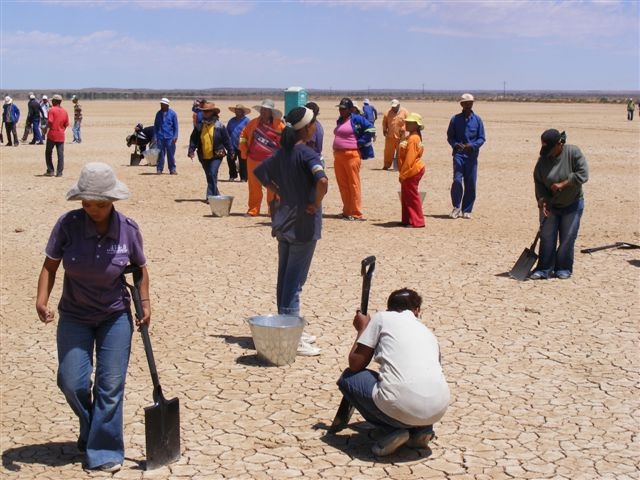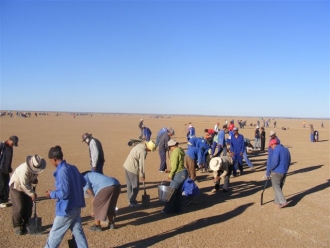
Today, Monday 22nd November 2010, The Times newspaper carries an unusual classified advert ...
|
People wanted to clear desert track for 1,000 mph racing car. No wages, constant heat, tough work in beautiful but remote Hakskeen Pan, Northern Cape, South Africa. Scorpions may be present.
|
The BLOODHOUND Project is calling on volunteers to travel out to the Hakskeen Pan desert, in the remote North West corner of South Africa, to help prepare the track for the world’s first 1,000 mph land speed record attempt. Their task: pick up every rock, stone and pebble over an area of 24 million square metres. By hand.
The advert recalls the most (in)famous job recruitment ad of all time, supposedly placed by Polar explorer Ernest Shackleton in 1912 or 13:
" MEN WANTED FOR HAZARDOUS JOURNEY. SMALL WAGES,
BITTER COLD, LONG MONTHS OF COMPLETE DARKNESS,
CONSTANT DANGER, SAFE RETURN DOUBTFUL. HONOR AND
RECOGNITION IN CASE OF SUCCESS.”
Although widely reported, the actual advert has never been found. For our purposes, it doesn't matter. What counts is the sense of challenge and adventure it evokes – qualities embodied by BLOODHOUND.
The Project is an international education initiative focused on setting a 1,000 mph land speed record. Its aim is to inspire young people about science, technology, engineering and maths, in part, by sharing the adventure – and all the data – and making these subjects as accessible and exciting as possible.
BLOODHOUND SSC is the ultimate racing car. Propelled by a state of the art jet and custom-designed rocket that produce the equivalent of 133,000ehp (or 180 F1 cars), it will cover the measured mile in just 3.5 seconds. Its top speed of 1050mph is faster than a bullet from a .357 Magnum handgun.
A stone flung up by the front wheels at this speed could punch a hole in the car’s thin alloy bodywork or severely damage one of its four solid aluminum wheels. Weighing 97kg each, when the car is travelling at top speed they will be spin at 10,200rpm and experience a force of 50,000G at the rim.
The team has recently conducted tests at the Cavendish Laboratories, Cambridge, with wheel design partner, Lockheed Martin, where sections of stone from Hakskeen Pan were fired into samples of aluminum at 1,000 mph. These samples are now being analyzed to see what effect such impacts might have on the wheels in the desert. Regardless of the outcome, the best way of mitigating the risk is to clear the desert surface of every single stone.
 Work has begun in earnest. A team of 300 local people, under the guidance of Track Boss Rudi Riek, has begun the backbreaking process of clearing stones. They need to drink 3000 litres of water every day as they check an area 20km x 1.5km in temperatures of up to 40 degrees Celsius. Even with such a large team on site, it will take over 120 days to prepare the fastest racetrack in the world.
Work has begun in earnest. A team of 300 local people, under the guidance of Track Boss Rudi Riek, has begun the backbreaking process of clearing stones. They need to drink 3000 litres of water every day as they check an area 20km x 1.5km in temperatures of up to 40 degrees Celsius. Even with such a large team on site, it will take over 120 days to prepare the fastest racetrack in the world.
UK volunteers who want to be part of the adventure are invited to travel out to Hakskeen Pan and join the track team. With only hard work and tough conditions on offer, their reward will be discovering a beautiful yet little known corner of Africa, making new friends and helping to inspire future generations of engineers and scientists.
For more on the desert preparation, see the latest news from the desert.

